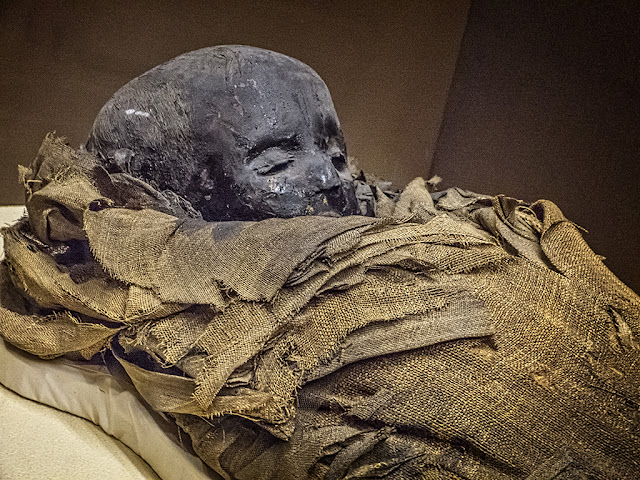Egyptian Art at the University of Pennsylvania Museum of Archaeology and Anthropology in Philadelphia, Pennsylvania. The Penn Museum houses one of the largest collections of Egyptian and Nubian material in the United States, numbering in excess of 42,000 items. Assembled through nearly a century of archaeological research, this collection is unusual in that the vast majority of the objects were obtained through archaeological investigations in Egypt and entered the Museum through a division of finds with Egypt's Antiquities Service. Because the Museum has worked at a wide range of sites (provincial and royal cemeteries, palaces, temples, towns, sanctuaries and settlements), the collection spans ancient Egypt's entire history, from the Predynastic Period (circa 4000 BCE) through the Greco-Roman Period and into the Coptic Period (ending in the 7th century CE). It also includes a large number of material categories, such as architecture, statuary, minor arts, domestic artifacts, textiles, papyri, pottery, tools, jewelry, weapons, funerary objects and human and animal remains.
 |
Head of King Osorkon II 874-850 BCE excavated at Tanis.
Photographed at the Penn Museum in Philadelphia. |
 |
Head of a Colossal Statue of Ramesses II 1290-1224 BCE excavated at Abydos.
Photographed at the Penn Museum in Philadelphia. |
 |
Head of a Colossal Statue of Ramesses II 1290-1224 BCE excavated at Abydos.
Photographed at the Penn Museum in Philadelphia. |
 |
Statue of a Lion Dynasty 26 672-664 BCE This sylized lion may represent a royal pet
as a cartouche appears on its chest and is thought to refer to Necho I.who ruled
the delta city of Sais under the Assyrian kings Esarhaddon and Assurbanipal. |
 |
| A re-carved statue of Ramesses II, 1897-1843 BCE, excavated at Harsaphes, Heracleopolis. Photographed at the Penn Museum in Philadelphia. |
 |
| Statue of Ramesses III, 1187-1156 BCE Dynasty 20. Photographed at the Penn Museum in Philadelphia. |
 |
| The goddess Sekhmet, 1405-1367 BCE (Late 18th dynasty) excavated in Thebes (Ramesseum). Photographed at the Penn Museum in Philadelphia. |
 |
| Gilded Cartonnage Funerary Mask produced after 300 BCE (Ptolemaic or Roman Period) Photographed at the Penn Museum in Philadelphia |
 |
| Ka-figure of Khenu, 5th Dynasty circa 2450 BCE excavated at Saqqara. Photographed at the Penn Museum in Philadelphia |
 |
| Mummy of a child from the Greco-Roman Period Egypt. Photographed at the Penn Museum in Philadelphia. |
 |
| Diorite Ka-statue of Amenemhat, circa 1490 BCE 18th Dynasty from the temple of Horus in Buhen (Nubia). Photographed at the Penn Museum in Philadelphia. |
 |
| Kohl pot used for storing cosmetic malachite in the shape of a baboon from El Kab in Upper Egypt. Photographed at the Penn Museum in Philadelphia. |
 |
Cartonnage lid of the Mummy Case of Nebnetcheru, a priest in a temple
at Karnak 1075-712 BCE Dynasty 21 or 22 from Thebes (?) |
 |
Gilded wooden mummy mask from the coffin of Padineferhotep, Ptolemaic Period, 3rd century BCE from Hu in Upper Egypt. Photographed at the Penn Museum in Philadelphia.
|
 |
| Plaster Bust of a man, Roman Period, 2nd century CE, from El Kharga in Upper Egypt. Photographed at the Penn Museum in Philadelphia |
 |
Bronze figurines of a sitting Ibis and squatting baboon, Egypt.
Photographed at the Penn Museum in Philadelphia |
 |
| Jewelry recovered from Egyptian tomb. Photographed at the Penn Museum in Philadelphia. |
All images photographed at the Penn Museum by Mary Harrsch © 2016 CC BY




















Comments
Post a Comment